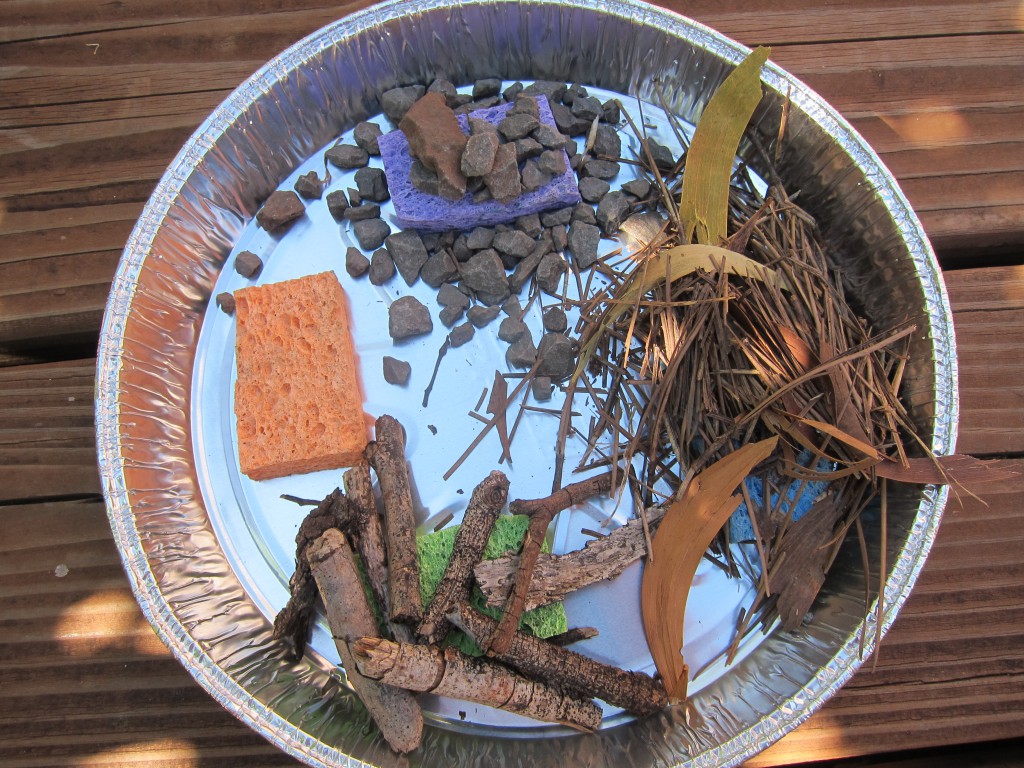Alpine/Aoelian » Unit 3: Life in the Kuahiwi and Kuamauna Zones » Activity 2: Holding on to Water Lab
Materials & Setup
Class Period One
- A sunny window sill or lamp
- Fan
For each lab group of two to four students
- Small sponges (four sponges of similar size and shape for each lab group)
- Water
- Natural materials such as leaves, sticks, rocks, nut shells, soil
- Small dishes or other impermeable surfaces
- Balance scale
For each student
- Student Page “Holding On To Water Lab” (pp. 19-20)
Class Period Two
For each lab group of two to four students
- Balance scale
For each student
- Student Page “Learning From the Lab” (p. 21)
Instructions
Class Period One
1) Divide the class into lab groups of two to four students.
2) Hand out the Student Page “Holding On To Water Lab Sheet” to each lab group.
3) Explain that the sponges in this activity represent insects that live in the alpine/aeolian environment near the summit of Haleakalä. In this environment—as in other dry environments—water is at a premium. The wind and intense sunlight have drying effects to which plants and insects in this environment have adapted. Each sponge-insect has a limited amount of water. The students’ job is to conserve that water over a 24-hour period. During that time, students are to protect their sponge-creatures in a manner that will best achieve this goal using only natural materials.
4) Have lab groups do steps one to three on the lab sheet.
Class Period Two
1) Have individuals or groups share their experiments and results with the entire class. Afterward, conduct a class discussion reflecting on the activity.
- Were there any patterns in lab results among groups? (For example, was the combination of sun and wind more drying than the sun alone?)
- Which methods seemed to work better than others? Why? (Which lab groups had the smallest percent change in the weight of the protected sponges?)
- Are the same methods effective for protection against the sun and wind? Why or why not?
- Help students relate their strategies to insect adaptations (and those of other animal and plants) in the alpine/aeolian environment. (If you did Activity #1 in this unit, ask students to draw on what they learned for this discussion. If you did not do Activity #1, use the “Alpine/Aeolian Challenges and Adaptations Answer Key” on pages 10-11 as background to help you guide the discussion.)
2) Assign the Student Page “Learning From the Lab” as homework.
Journal Ideas
- Relate how plants and animals have adapted to living in dry environments to things that humans do to protect themselves against dry, windy, sunny conditions.
Assessment Tools
- Student Page “Holding On To Water Lab Sheet”
- Lab conduct and methods
Media Resources
- None.

